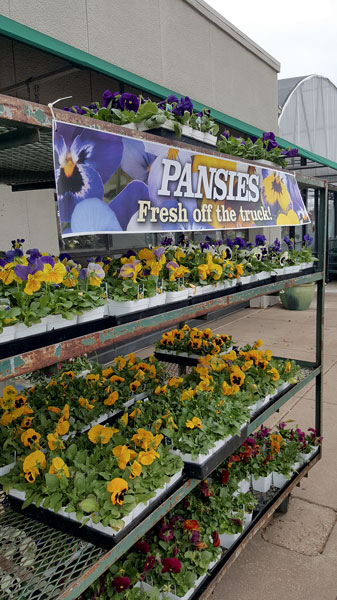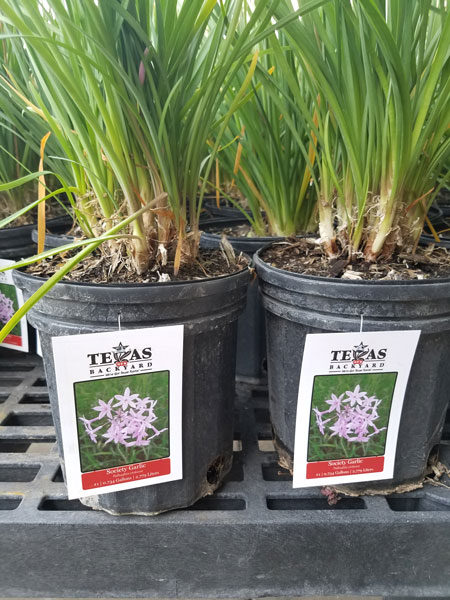11/1/2018
DIY Signs
Todd Davis

Most garden centers in this country are unhappy with their signs.
They’re low quality or completely nonexistent. Or they’re too expensive. Or they fade quickly. Or they have inaccurate information for their climate. However, new technology is allowing garden retailers to create their own high-quality signs themselves, eliminating many headaches and assuring accurate information.
Why Print Yourself?
Potential cost savings is one advantage, but you’ll have to invest in equipment initially (more on that shortly). But equally important is you can control your own content.
You can customize your signs so the information is exactly correct for the microclimate (or microclimates) you serve. You’re not relying on generic descriptions, hardiness or sun exposure estimates put on signs by manufacturers.
You can add your own brand information or inform customers what plants are on special that week. You can test market new brands or advertise tie-in products or complimentary plants. The opportunities are endless.
Pictured: Some printers can produce weatherproof banners, like this one, to display on racks.
What You’ll Need
What printer you choose is your No. 1 decision. Laser, LED and inkjet printers are all available and can range from around $1,000 to well over $10,000. And they aren’t created equal. A higher price tag doesn’t necessarily mean better performance. But here are some things to look for:
• Work with a company that specializes in working with the horticulture industry—and there are many—for better support when you need it. If you’re shopping at a generic printer store, they’re not going to understand the conditions your signs and machine will be in.
• If you’re looking at inkjet printers, make sure you work with vendors that use coated stock for outdoor horticultural use and appropriate toners.
• Watch your toner costs because that’s going to be a major expense in the long run. Look for printers that apply toners the most efficiently.
• Beware of manufacturers’ predictions on how many sheets you can print per toner bottle. They usually base these estimates on 10% to 15% coverage per page and nursery signs usually have a lot more than that. Given the range of colors on any given sign, there’s virtually no way to predict how much toner you’re going to use. If a manufacturer gives you a blanket answer, he’s lying.
• Look for printers in which you can order the individual toner cartridges (cyan, yellow, magenta, black) separately. Garden centers go through more cyan and yellow than the other colors. This is because our signs almost always have a lot of green—blue (cyan) and yellow make green.
• Ask about warranties and maintenance. Ones that provide on-site maintenance in 24 hours are the best. You don’t want to wait one to two weeks to get up and running again when you hit the crunch of spring.
What Stock is Available
There are currently hundreds of garden centers printing signs on paper and then laminating said signs. If you’re one of these companies STOP THIS PRACTICE IMMEDIATELY.
There are zero reasons to do this. Coated, weatherproof sign stock is available from dozens of vendors. They’re going to save you time, labor and money, and they’re going to look better and probably not fade as fast.
A 7-by-11-in. laminated sign will probably run you, accounting for labor, somewhere around $4. The same sign printed on a polyester coated sheet will likely run you about 70 cents and that’s including the cost of toner on that sign. Times that savings by the hundreds of signs in your yard and you’ve suddenly paid for a vacation to the Caribbean.
There are many thicknesses of coated paper available, but not all printers will print on the thicker stock. But this is where your sign holders come into play. If you have high-quality sign holders (such as the common galvanized sign holders), you likely don’t need a thicker sign and you can save money.
If you’re a retailer that sells food in addition to plants, keep in mind that certain weatherproof signs and toners have been certified by the FDA as food safe. If this applies to you, ask your vendor for the certificate.
 What About Fading?
What About Fading?
All outdoor signs are going to fade at some point. Your results are going to vary highly based on your conditions and, more importantly, the printer and toners you’re using.
Pictured: Printers allow you to create larger tags for plant material, giving you more room for care and planting tips.
Consider the following:
• Not all colors fade consistently. Red is notorious for fading first.
• Ultraviolet (UV) light is your main enemy. The higher light you have (such as higher elevations), the faster your signs will fade. If your signs are in a shaded area, they’re going to last longer.
• Consider how long you need your signs to last without fading. If you’re only going to have them out three or four months, then reprint them again next year. Then you can get by with a less-expensive printer.
More expensive printers can have better fade resistance, but not always. Ask your vendors and ask them for references. The best performers can take 12 months of UV before they begin to fade. The worst can be completely faded in a month to six weeks.
What About Software?
Signs can literally be created on something as simple as Microsoft Word. How sophisticated you want your signs and how much time you want to spend creating them will depend on what software you use. But eventually you’ll want to get away from creating each sign (in Word or PDF files, for instance) individually. Label/sign software is available that allows you to create a template, then pull the data and photos of your plants from a database, such as an Excel spreadsheet. So you create just one template and can print all your plants off said template.
Also, when it’s time to print signs, you just tell the machine what plants you want and the printer spits them out. You don’t have to go searching your files for each individual plant and then print them out individually. Keep in mind that many horticultural printing software vendors provide plant databases along with their software for free. These include descriptions, heights, widths, sun exposure, hardiness, etc. on thousands of plants. These databases likely won’t have all the plants you need, and sometimes you’ll disagree on the data provided, but at least you’re not starting from scratch. You can always add plants and edit the information as you go.
Custom Signage
Lastly, consider that you can also create your own customized bench cards online and have them printed and shipped to you. This is a great option if you don’t want to make the investment in the printer. These websites allow you to pick from thousands of plant varieties and customize the signs with your information, logo, retail pricing and container size, and customize the plant descriptions. GP
Todd Davis is director of the OnSyte division at Horticultural Marketing & Printing in Mesquite, Texas; toddw.davis@ororavisual.com; (800) 433-8247.